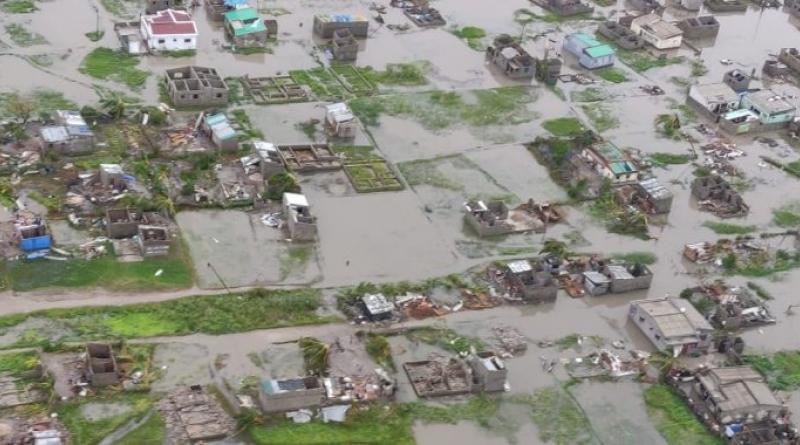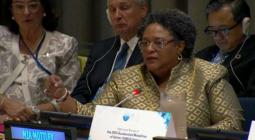Africa’s ‘climate refugees’ are already here – and there

There was a time when the withered Lake Chad region was the focal point of what climate change on the African continent looked like, and what it could or would mean for migration. Some 2.6 million people are displaced there, according to the most recent numbers from the United Nations Office for the Coordination of Humanitarian Affairs (UNOCHA). That’s primarily because of the security crisis across Chad, Cameroon, Nigeria and Niger, but the rise of conflict is linked to the evolving climate crisis in a region where 90 percent of the lake – and the livelihoods it once supported – have turned to dust.
There was also a time when researchers and migration experts avoided speaking about the obvious: climate change has become a key driver of migration and it fuels conflict over scarce resources. That silence is no longer the case, says António Vitorino, head of the International Organization for Migration (IOM).
“We are moving on everything from offsetting carbon to eating less meat, but how are we doing confronting the transformational impact that climate and environment-induced population movements are having and will have on peoples and societies across the globe?” asked Vitorino ahead of the September UN Climate Summit.
“Emergency response addresses the devastating symptoms of environmental change. But the condition we are diagnosing is far more complex,” he added. “When an unstable climate collides with persistent inequality, weak governance, ongoing fragility, and sharp demographic change, the result is a maelstrom of drivers that lead to increased internal, regional and international movements as individuals scramble for safety and the legitimate prospect of a future.”
His words were echoed anew during last week’s inaugural Global Refugee Forum 2019 in Geneva. Both UN Secretary General António Guterres and Filippo Grandi, the United Nations High Commissioner for Refugees in a position Guterres once held, acknowledged how climate change is creating refugees and fueling conflict, notably in the Sahel.
And if there is one climate lesson from the African continent this year, it is how relentless the impacts have become.
Ethiopia, one of five nations to serve as co-convenors of the forum, remains stricken by a multiyear drought with 425,000 people displaced by the conditions. “Conflict over resources and ethnic violence triggered more displacement in Ethiopia than any other country in the world in 2018,” said the Internal Displacement Monitoring Centre (IDMC) in a new report focused on Ethiopia’s Somali region.
The government has launched its new Ethiopia Durable Solutions Initiative (DSI), a strategy that shifts away from short-term humanitarian aid, though it is still delivered, into longer timelines that prioritize adaptation. The goal is to create new opportunities, especially for those whose pastoral livelihoods have been destroyed, as part of an overall vision to align development and planning in light of future risks.
Extremes across the African continent
Ethiopia and the wider Horn of Africa, now with a new regional approach to displacement, have contended with drought but also massive flooding, whether from specific tropical systems such as Pawan in Somalia, or the inundating rains enhanced by climate conditions. In November, Djibouti saw two years’ worth of rain fall in a single day, ultimately leaving 150,000 people – many of them migrants, refugees and others in transit – needing humanitarian aid. The storms arrived in the same fragile, conflict-prone regions devastated by Cyclone Sagar in 2018.
“This is testimony on how the climate crisis is adversely affecting those most vulnerable in Djibouti, where two years of subsequent large-scale flooding events are unprecedented,” said UNOCHA in an update issued last week. It presents “a major challenge to systems and populations that have little learned coping mechanisms to deal with flooding and other climate change related events such as the raising of sea levels and stronger tides.”
This year’s floods also reached into the center of the continent, affecting nations including South Sudan, Uganda, Burundi and hard-hit Central African Republic; with them came complications beyond displacement, such as food insecurity, mosquitoes and the threat of disease. The deluge and the subsequent landslides in Kenya’s West Pokot County left dozens dead and hundreds more displaced. The floods in Democratic Republic of Congo affected more than 160,000 people, along with homes, schools and health facilities.
Perhaps nowhere saw more cyclone and flooding damage than Mozambique, which was hit by back-to-back cyclones Idai and Kenneth. The former, considered one of the deadliest storms ever recorded in the southern African region, claimed hundreds of lives there and in neighboring Zimbabwe and Malawi. It also underscored how displacement is affecting urban centers like hard-hit Beira, at the same time that other parts of the country dealing with ongoing extremist attacks were delivered yet another blow.
Climate displacement, whatever its name
The 2019 list goes on and on, with the majestic Victoria Falls reduced to a trickle by drought affecting Zambia and Zimbabwe, nations that can ill afford the climate shocks. To the west in Namibia, power generation is down by 40 percent – a problem shared by its southern neighbors along the once-mighty Zambezi River and, to some extent, in South Africa where drought, flooding and heat are at extremes.
As the climate impacts continue to force people from their homes and livelihoods, there are many who cannot go home soon. Or ever. The Global Refugee Forum resulted in some 770 pledges from entities including World Bank, private sector players and governments. Yet Grandi made clear, as IOM has in the past, that there’s little motion on a new definition for “climate refugee” beyond the traditional understanding of political asylum or ethnic protections by the international community.
“We need – I know I get this question all the time – we need to uphold the refugee definition that is enshrined in the international legal system because it is strong, and we can leverage it in our discussions with States,” Grandi said. “We are not always successful, but we can use it. But we have to recognize also that many other people on the move have vulnerabilities and therefore need help.”
That may be true in 2019, but as we approach 2020 and the years that follow, it’s worth considering an African continent that can’t escape the climate shocks of today. Come tomorrow, how will it matter what we call the millions of displaced?
AFRICA TIMES
-



